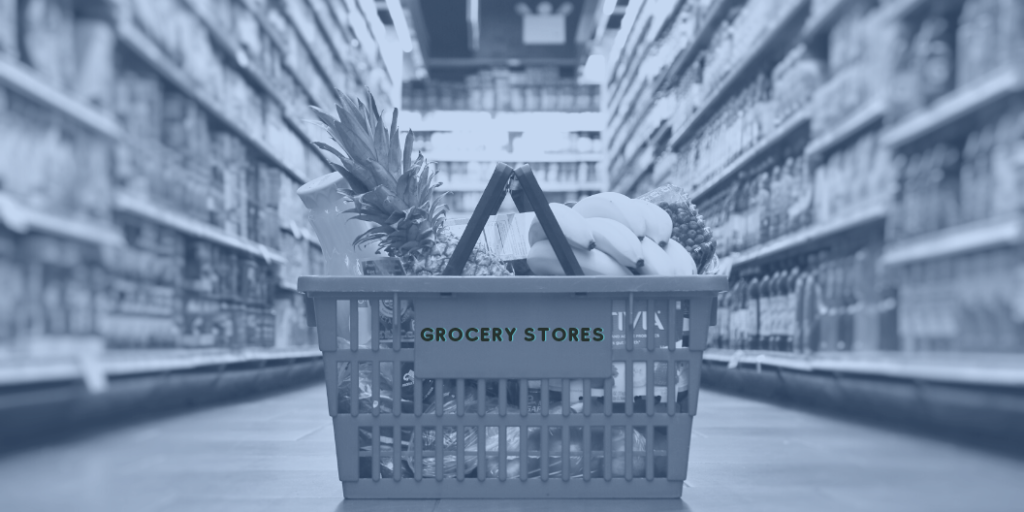Greater consumer focus on home improvement during the 2 years of the pandemic and a dramatic shift toward online retail have combined to improve sales numbers in the DIY sector. However, high competition, a lack of omnichannel maturity, and rising procurement costs have placed a great deal of pressure on efficiency and margins. DIY retailers need a combination of flexible, AI-driven technology that can match continuously evolving demand as well as best practices that will raise margins and unlock omnichannel profitability.
By 2025, ecommerce will make up 28% of market share in DIY and home improvement, up from 21% in 2020 in the US, with similar growth expected in Europe, in the UK by 2025, ecommerce is expected to account to 50% of market share in the category, growing market share by 10% in five years (According to Edge by Ascential).
Retailers in this vertical manage a large and complex assortment with 20,000-80,000 products per store and up to a million SKUs online (extended shelf) with a significant percentage of slow movers. Managing such a complex assortment spanning across different departments and different ladders (pack size and quality) requires constant mapping, analyzing and monitoring capabilities of the competitive landscape and user behavior.
An agile pricing approach looks at pricing as a continuous journey where there is no one right pricing strategy. Price is adjusted to the market automatically based on pre-existing rules that can be easily amended to serve the business goals.
In this blog we will address some of the key models / pricing concepts DIY retailers should consider when building their pricing strategies.
Product classification
Breaking down the assortment allows the application of different pricing strategies to different products. The methodology centers around categorizing the assortment into three separate groups that serve different purposes.
Key Value Items (KVIs) or Categories (KVCs) – essential products / Categories that drive store traffic and influence price perception. These products / Categories attract customers into the store, increasing the number of sessions (online) or daily visitors (offline). KVIs are usually priced competitively.
Key Value categories (KVCs) in DIY stores will be once perceived by consumers as core to the vertical (such as: lumber, power tools, paints), this may vary depending on country and even brand.
A gallon of paint is an example of a DIY KVI. It is a product with high unit sales whose price is familiar to consumers and drives their price perception. Customers use KVIs to classify retailers as ‘cheap’ in their mind. This then determines their willingness to shop there.
Volume Drivers – Once the customer is in store due to a competitive KVI offer, it’s time to build profitability. Volume drivers are the second stage in the customer journey. These products have high unit sales and can be found in many baskets. Their profitability is low yet better than KVIs. The goal of volume drivers is to recoup some of the customer acquisition cost from competitively priced KVIs.
In DIY, a paint brush or masking tape is a volume driver. It is found in many baskets but is not a traffic driver and its price is less easily recalled than that of a gallon of paint. It drives volume, but not price perception. While KVI price changes are correlated with the total amount of store traffic, volume drivers are not.
Profit Generators – The products in this group have high profitability and low sales volume. Customers regard these products as non-essential and their contribution to profit is higher than their contribution to revenue (for example: Special effect brushes or stencils)
The cleaner and more granular the data (attributes and classifications), the more effectively the pricing software can operate, and the more diverse the possible business cases become.
Slow moving Items
With the large assortment and variation of product sizes retailers are struggling to price slow moving items due to lack of automation or ability to create data models that can help find clustering and forming “similar products” scenarios. A robust solution can provide optimization recommendations using intelligent AI-clustering based on historical transaction data, click streams. product information, and other available data.
Elasticity of Demand
Price elasticity enables retailers to predict consumers’ response (demand) to price changes. Utilizing price elasticity (of a single SKU or a group) and optimizing the price changes accordingly has a direct impact on the retailer’s top and bottom line.
Inter-product dependencies
The demand of a product sometimes depends on complement (Halo effect) and substitute products (Cross elasticity) and their prices. For example, generic and private brands often have similar items. These items are substitutes. The demand for the private brand would depend not only on its own pricing, but also on the price movements of the generic brand. Similarly, demand for complementary products, such as grills and grill cover or cleaning tools are also influenced by both product prices.
A critical area DIY retailers must examine and deal with is identifying product families and inter-product dependencies within the assortment, such as different sized packs (single vs. 6 pack / 60gr vs. 80gr etc.) or branded vs. private label products (for example: private label needs to be 10% cheaper than leading brand).
Since shoppers typically buy multiple items from a DIY store at a single visit, demand relationships between the items that are included in baskets are crucial in determining how retailers set prices.
Competitor sensitivity
Competitor sensitivity is a coefficient that helps retailers move from gut feel responsive pricing to a scientific approach to reacting to market changes. Using historical data, the competitive sensitivity coefficient measures the impact a price change made by a competitor has on a specific product or category. Once the value of the coefficient is set it can be used to set sophisticated rules about reactions to competitive price changes. For DIY where different categories may compete with different retailers not only limited to the DIY space this becomes an essential tool for both price perception / customer lifetime value and profit.
Seasonality
Demand in DIY retail is heavily impacted by seasonality and seasonal weather trends. A seasonal pricing strategy helps minimize loss of cash flow in low periods and maximize profitability in peak seasons. It smooths demand by enticing customers with low prices during the slow period, while maximizing revenues with higher prices when demand is strong. The right system can ramp down inventory at season’s end, identify which stores have excess inventory that needs to be marked down, and then optimize those markdowns to maximize margin while effectively clearing inventory before it falls out of season.
While DIY retailers face a lot of complex problems, they can address a wide range of challenges effectively and efficiently simply by having the right pricing platform in place. AI-driven demand planning solution provides the data-processing power necessary to manage the scale and complexity of the DIY assortment with high levels of both accuracy and efficiency.







